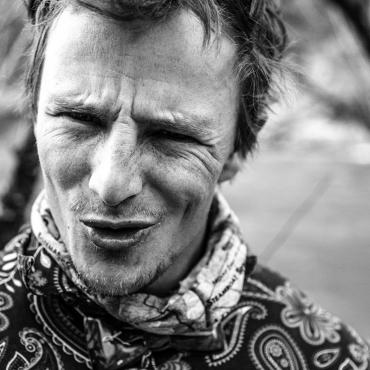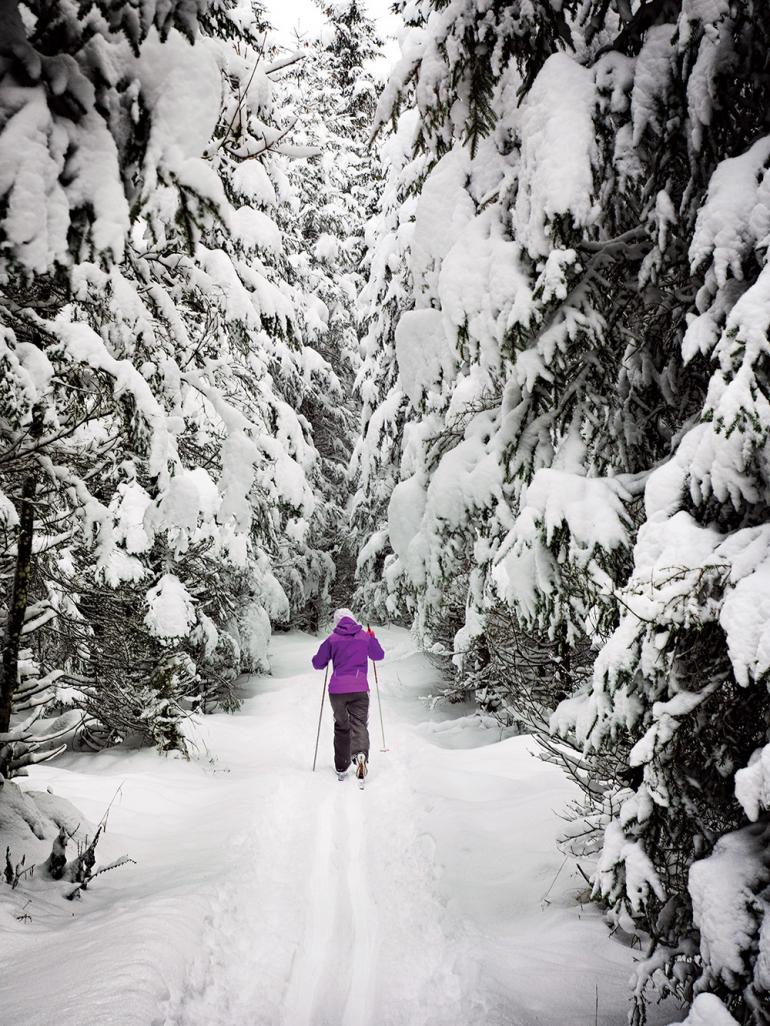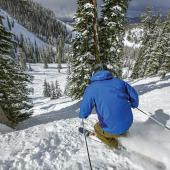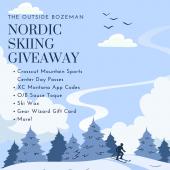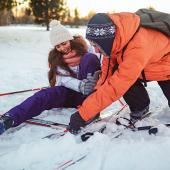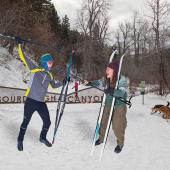Magic Carpet Ride
An epiphany in the winter woods.
It’s Christmas season and the whole family is getting together. Like most years, the big event is Nordic skiing—when planning excursions for three generations, there’s not much else to choose from.
Our winter gathering commences outside of Gardiner—my aunt rents a sleepy cabin in the mountains north of Yellowstone and we descend upon it en masse. It’s classic big-family chaos: agendas colliding, dynamics conflicting, partners bickering. Bumping into each other, talking over one another, and moving around like chickens without heads, we set up shop for the weekend. Two grandparents, four parents, four grandkids, and a boyfriend… somehow, in an hour’s time, we manage to gear up for an evening ski.
We lay a topo map across the kitchen table and consider options. Grandpa and Dad are the big cross-country skiers of the group, so they lead the discussion. After some back-and-forth, we have our route decided. The area we pick isn’t well-known for Nordic skiing—as far as we know, it really isn’t known for much at all.
As we pile into vehicles, clouds roll over the horizon and the sky grows dark. It hasn’t snowed all day, but I get a strong hunch it might start. We zigzag up a winding road where pillows of snow stack high and beautiful on outstretched branches. When the snow gets deep, we pull off on the side of the road and hop out. I grab my skinny Salomon Snowscapes from the back of the truck and toss them on the road, half-enthused. All right, just another Christmas ski.
You see, cross-country skiing is not my activity of choice. If it were up to me, I’d be lining up 35-degree slopes and intimidating terrain. It’s all I’ve ever known—growing up, my friends were in constant pursuit of the edge. It didn’t matter what they were doing, the entire point was to push oneself past the threshold of certainty. They did it through extreme speed, technical maneuvers, and huge air. I too learned to push the margin. And cross-country skiing was definitely not the way to do it.
But it’s family time, and I’m a team player. Let’s do this Nordic thing.
With a group as large as ours, we’re going to get spread out. Some will charge ahead, while others will linger in the back, so we have one last discussion about the plan. There’s a drainage up ahead that no one has been up before: we’ll ski to its junction and see how far we can get.
We clip in and start up the snow-covered road. At the first corner, after we’ve gained some elevation, I stop to take photos and the rest of the group continues on without me. South toward Yellowstone, a thick fog settles lower, and with it comes a peaceful stillness. After a long, crammed car ride, it feels good to be outside. It’s silent. No one is quarreling, laughing, or telling anyone else what to do. Stimulation evaporates. Snowflakes begin to fall.
I continue up the road at a pace just easy enough to slip me into a soft, meditative rhythm. One foot, then the other, sliding fluidly through the firs. Eventually, I run into the rest of the family and we ski together, but the ambiance remains quiet. Now that we’re out here, deprived of the normal sensory distractions, everyone seems content with their surroundings. There isn’t a whisper of gossip, a mention of Instagram, or a point of contention. We all fall into a similar cadence.
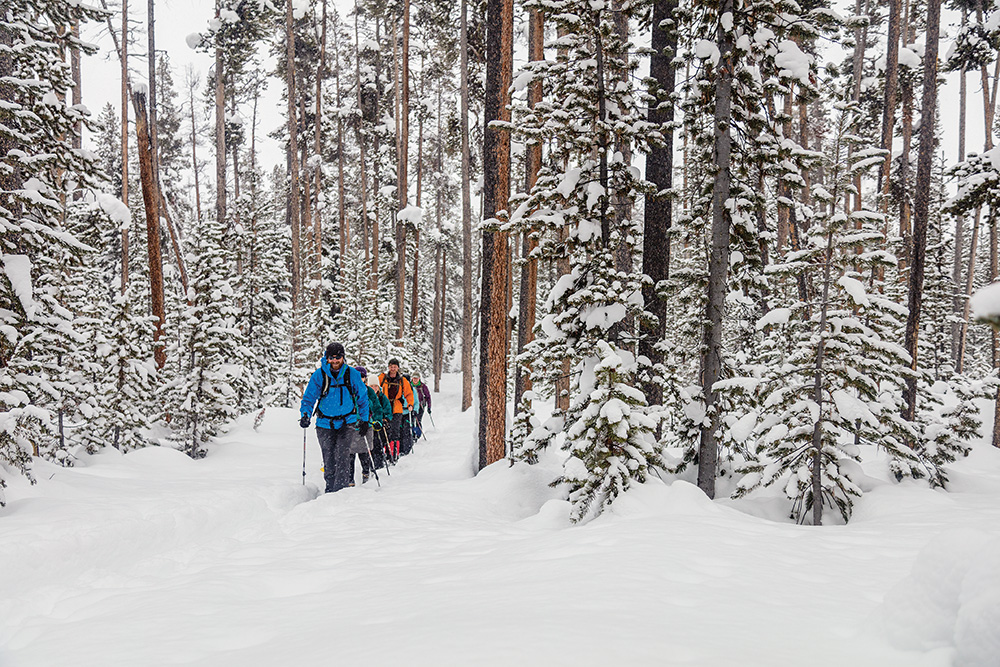
Up the drainage we go: one mile, two, three. We take turns breaking trail until nightfall approaches. With big smiles, we decide to turn around. On this slope, our well-stamped track should be smooth sailing—steep enough to gain a little speed, but no so much where I’ll worry about falling.
I start down and catch a dreamy momentum. I lengthen my stride, and each movement aligns to the tempo of my breath. With each glide I gain a good 15, maybe 20 feet. Covering such distance with so little effort is empowering. I feel a little invincible, but also like I’m part of something—something larger than me, and it’s carrying me along. I’m a leaf in the current of a meandering stream.
My pace is swift, but my movements slow. My motor cortex goes into autopilot. My mind goes numb, and my body follows. I have no thoughts. I feel nothing.
My vision tunnels like I’m traveling in warp speed. The snow falls harder as if keeping the beat, matching the intensity of my state. I’m a Zen master in motion—the world sublime, my awareness at its peak.
I didn’t take any drugs, did I? I contemplate briefly.Of course not, I’m on a family vacation!
One final corner and I drift to a stop next to the trucks. Suddenly, I’m thrown back into a circadian reality. I have no idea how much time has passed and have little tangible memory of the downhill. But I feel euphoric and tranced.
Ancient Japanese martial artists coined this hyper state “mushin.” Chinese philosophy refers to it as “wu wei.” We call it, in modern, western culture, “being in the zone,” or “flow state.” It occurs with rapid altercations in normal brain function. A dramatic shift in chemistry that results in a dreamy, intangible, mental magic carpet ride. It’s a wellspring for motivation, learning, and creativity. It is also incredibly addictive.
As I bask in the current of feel-good neurochemicals, I realize that this is the exact same feeling I get after an epic day of downhill skiing. It’s the exact same feeling my friends and I chased growing up. Every time we’d land a new trick, or ski something new, or do anything we’d never done before, we’d catch crazy states of mind. As teens and young 20-somethings, we never thought of it as something that could be achieved doing anything else. But now I’ve found it through a much simpler, much safer, much mellower means.
Snow is falling silent and steady. The only sound I hear is the faint rapid thumping of my heartbeat. Then, the distant scrape of skis on snow echoes from around the bend. I turn back uphill and see my family coming. They’re spread out in a long, fluent line, each intensely focused—in a wonderful flow state of their own.


